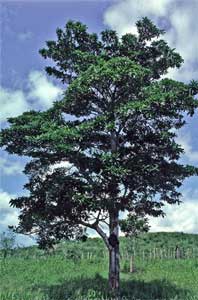History of Jagua
 Jagua is indigenous to the rainforests of Central and South America and has been used for as long as can be remembered. Exactly how long is not known. Many of these indigenous people have spent the majority of the past cut off from Western Civilization. What is known is that it’s been passed from generation to generation. Each tribe has their own way of preparing the Jagua, application methods and tools.
Jagua is indigenous to the rainforests of Central and South America and has been used for as long as can be remembered. Exactly how long is not known. Many of these indigenous people have spent the majority of the past cut off from Western Civilization. What is known is that it’s been passed from generation to generation. Each tribe has their own way of preparing the Jagua, application methods and tools.
Jagua is the most common name for the fruit but it does go by a few others such as Jenipapo and Huito. Like most plants in the Amazon it has multiple uses and is precious to the environment and the tribal people from such places as Panama, Columbia, Brazil and Paraguay. The Jagua tree produces an orange like fruit that ranges in size from a Kiwi to a melon and tastes much like dried apples or quinces.
Since it is a fruit tree it provides food and is harvested for many traditional jams, deserts and beverages, even alcoholic beverages. It is also valued for it’s medicinal properties. It is used to ease colds, sore throats, diarrhea, bronchitis, asthma, rheumatism, itching and it even has anti-bacterial and antibiotic properties. It is often used as an insect repellant or protection from the sun by painting the skin with the juice. Many times the painting is done in intricate patterns or bold geometric designs for all kinds of ceremonies and celebrations. The juice of the unripe fruit is colorless but oxidizes on exposure to the air and gradually turns a black/blue color. It is commonly used to dye clothing, hammocks, utensils and basket materials. The fruit is so renowned with its medicinal properties that in Guatemala the Indians carry the fruit in their hands in the belief that this will provide protection from disease and ill fortune.
Now that Jagua has made its way to Western Culture we are sure to see it as prolifically as Henna. It’s a great alternative and offers us the same safe and natural dyeing qualities.
